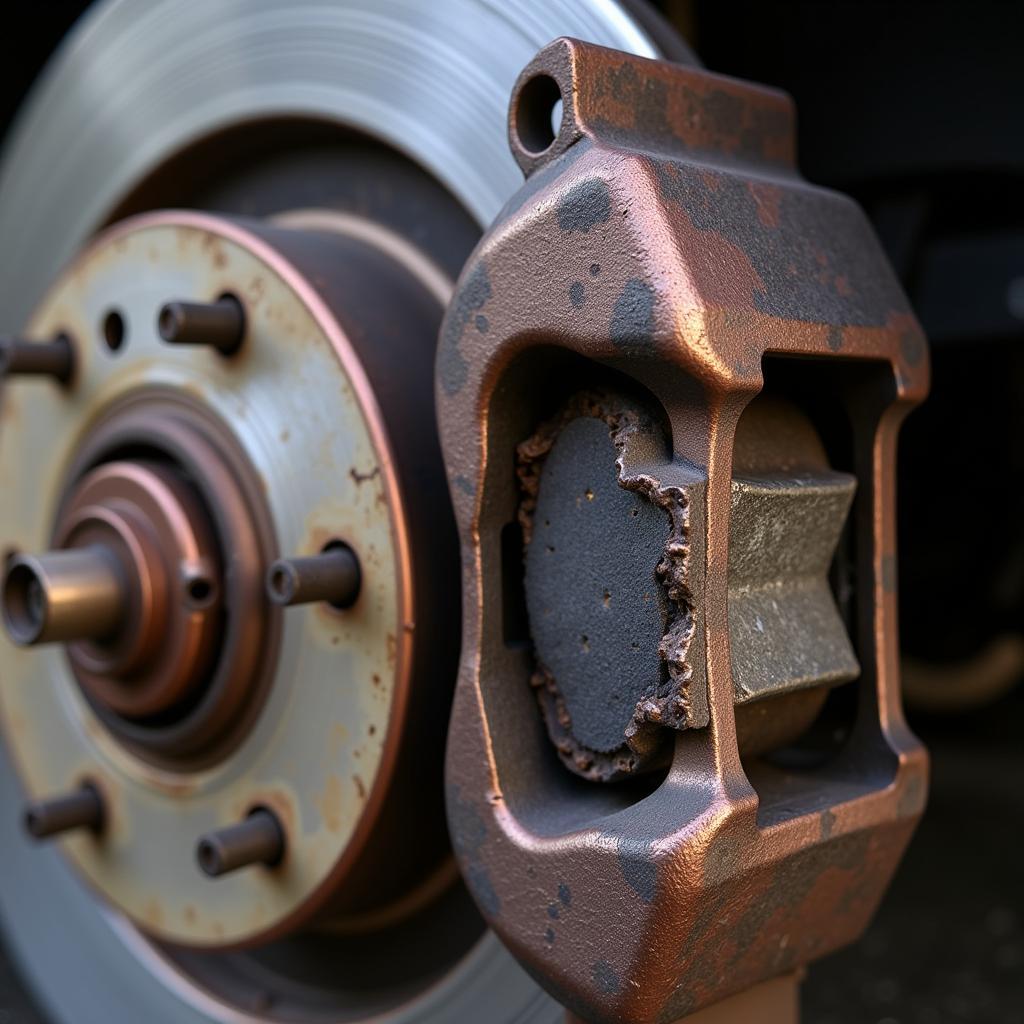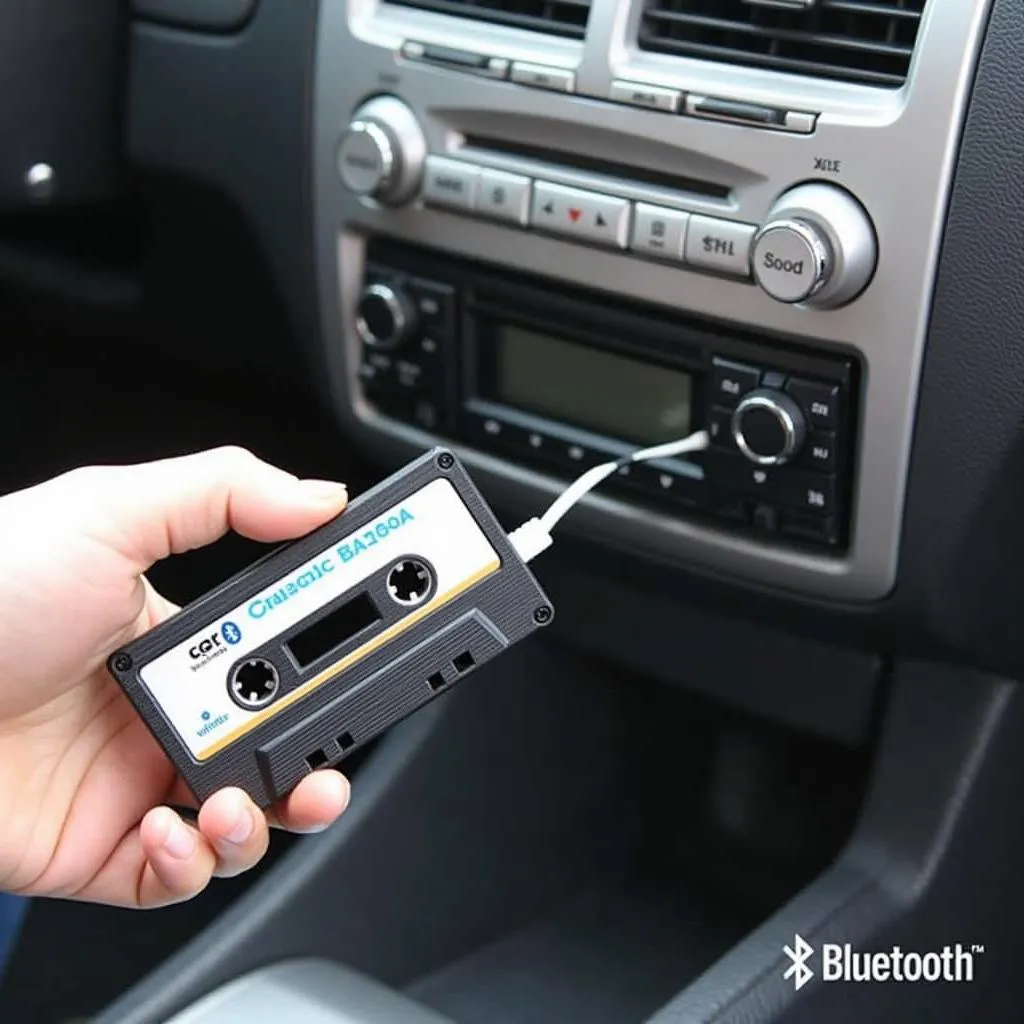The brake warning light on your dashboard is a crucial safety feature, and when it illuminates, it’s sending a clear message: “Pay attention! Something might be wrong with your braking system.” Ignoring this warning could lead to dangerous situations on the road.
This comprehensive guide will delve into the common reasons why your brake warning light might turn on, provide insights into troubleshooting the issue, and offer guidance on what steps to take next.
Understanding Your Car’s Braking System
Before we jump into the reasons behind a glowing brake warning light, let’s briefly understand the essential components of your car’s braking system:
- Brake Pedal: The lever you press with your foot to slow down or stop your vehicle.
- Brake Booster: This component amplifies the force you apply to the brake pedal, making braking easier.
- Master Cylinder: This cylinder houses the brake fluid reservoir and uses hydraulic pressure to transmit your braking force to the wheels.
- Brake Lines: These lines carry the brake fluid from the master cylinder to the brakes at each wheel.
- Brake Calipers and Wheel Cylinders: These components house the brake pads (for disc brakes) or brake shoes (for drum brakes), which create the friction needed to stop the wheels.
Common Reasons Your Brake Warning Light is On
The brake warning light can be triggered by a variety of factors, some more serious than others. Here are the most common culprits:
1. Low Brake Fluid Level
What it means: One of the most common reasons for the brake warning light is low brake fluid. Brake fluid is the lifeblood of your braking system, and a leak anywhere in the system can cause the fluid level to drop.
What to do:
- Check the brake fluid level: Locate the brake fluid reservoir under the hood (refer to your owner’s manual for the exact location) and check the fluid level. If it’s below the minimum mark, add the recommended brake fluid type (DOT 3 or DOT 4, as specified in your manual).
- Inspect for leaks: If the fluid level is low, carefully inspect the brake lines, hoses, and connections for any signs of leaks. Look for wet spots, drips, or puddles of brake fluid.
 Checking Brake Fluid Level
Checking Brake Fluid Level
2. Worn Brake Pads
What it means: Most modern vehicles have wear sensors integrated into the brake pads. When the brake pad material wears down to a certain point, the sensor triggers the brake warning light.
What to do: If you suspect worn brake pads, it’s crucial to have them inspected by a qualified mechanic as soon as possible. Worn brake pads significantly reduce your braking efficiency and can lead to costly damage to other brake components.
3. Brake System Malfunction
What it means: The brake warning light can also indicate a malfunction within the braking system itself. This could involve issues with the master cylinder, brake booster, ABS system, or other components.
What to do: Diagnosing and repairing brake system malfunctions require specialized knowledge and tools. It’s highly recommended to take your vehicle to a certified mechanic or dealership for a thorough inspection and repair.
4. Parking Brake Engaged
What it means: In some vehicles, the brake warning light may also illuminate if the parking brake is not fully released.
What to do: Double-check that your parking brake is completely disengaged. If the light remains on, there might be an issue with the parking brake sensor or cable.
What to Do When the Brake Warning Light Comes On
If your brake warning light comes on while driving:
- Stay Calm: Don’t panic! Pull over to a safe location as soon as possible.
- Assess the Situation: Check your parking brake. If it’s disengaged, proceed with caution.
- Check Brake Fluid: If you feel comfortable and it’s safe to do so, check the brake fluid level.
- Seek Professional Help: If the brake fluid is low or you notice leaks, do not continue driving. Call a tow truck to transport your vehicle to a trusted mechanic.
Brake Warning Light: FAQs
Q: Can I drive with the brake warning light on?
A: It’s strongly advised against driving with the brake warning light on. Continuing to drive with a compromised braking system puts you and other drivers at risk.
Q: How much does it cost to fix a brake warning light issue?
A: The cost of repair varies greatly depending on the underlying cause. A simple brake fluid top-up might cost a few dollars, while a brake system repair could cost hundreds or even thousands of dollars.
Q: How often should I check my brake fluid?
A: It’s a good practice to visually inspect your brake fluid level at least once a month and more frequently if you notice any changes in your brake pedal feel.
Prioritize Your Safety: Don’t Ignore the Warning
Your vehicle’s braking system is paramount for your safety on the road. Never ignore the brake warning light. By understanding its potential causes and taking appropriate action, you can ensure your safety and prevent costly repairs. If you’re ever in doubt, consult a qualified mechanic to diagnose and address any brake-related concerns.


